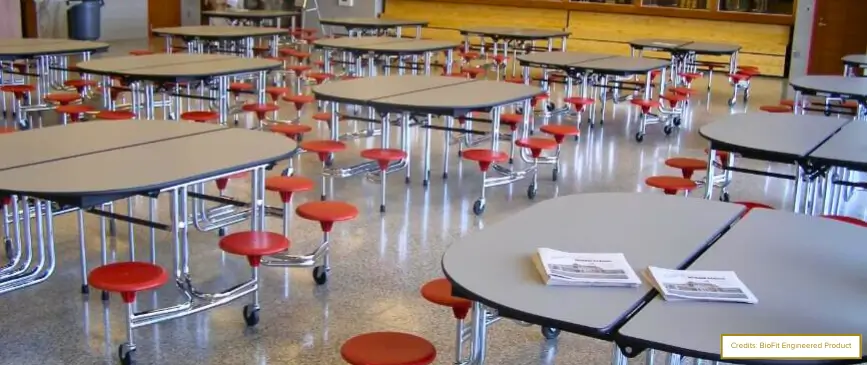Introduction
Food waste in schools is a pressing issue that demands attention and action. Each year, educational institutions generate a substantial amount of food waste, leading to adverse environmental, social, and economic consequences. The impact is twofold: not only does it contribute to the global problem of food waste, but it also undermines the efforts of schools to provide nutritious meals and cultivate sustainable practices. To address this issue, schools need to adopt effective strategies that minimize food waste. Therefore, in this article, we will explore five practical ways to reduce food waste in schools to promote sustainability and foster responsible dining practices.
Why is so Much Food Wasted in Schools?
Food waste in schools has become a pervasive issue that requires our attention. Understanding the underlying reasons behind the staggering amount of food wasted is crucial in finding effective solutions. Let’s explore some key factors contributing to food waste in schools.
Overproduction and Portion Sizes:
One significant reason for food waste in schools is the tendency to overproduce meals and serve larger portion sizes than necessary. To ensure that no student goes hungry, schools often prepare more food than is consumed, leading to surplus leftovers. According to a report, it is estimated that around 30-40% of food prepared in schools ends up as waste.
Picky Eating Habits:
School cafeterias face the challenge of catering to the diverse tastes and preferences of their student population. As a result, some students may choose to discard or not consume certain foods, contributing to food waste.
Limited Time for Meal Consumption:
Many students have limited time to eat their meals during school hours. This time constraint often leads to rushed eating or leaving food unfinished. Consequently, perfectly edible food ends up in the trash.
Lack of Food Education:
A lack of awareness and education about the impact of food waste is another factor contributing to the issue. When students are not informed about the consequences of wasting food, they may not prioritize efforts to reduce food waste.
Inefficient Food Management:
Poor food storage, handling, and inventory management systems can exacerbate food waste in schools. When storage conditions are inadequate, food can spoil or expire prematurely, leading to unnecessary waste. Additionally, a lack of proper rotation and inaccurate record-keeping can contribute to food being forgotten or overlooked, resulting in avoidable disposal.
5 Ways to Reduce Food Waste in Schools
Implementing effective strategies to reduce food waste in schools is crucial for promoting sustainability and responsible consumption practices. By adopting innovative approaches and involving students, schools can make a significant impact in minimizing food wastage. Let’s explore five practical and impactful ways that schools can implement to tackle the issue of food waste.
1. Start with Educating Students about Food Waste:
One of the most effective ways to address food waste in schools is through education. By raising awareness among students about the impact of food waste and the importance of responsible consumption, schools can promote a culture of sustainability. Incorporate food waste reduction lessons into the curriculum, organize awareness campaigns, and engage students in discussions about the environmental and social consequences of wasteful practices. Empowering students with knowledge can transform them into active participants in the efforts to minimize food waste in schools.
2. Implement Portion Control:
Implementing portion control practices can significantly reduce food waste in school cafeterias. By providing students with appropriately sized portions, schools can ensure that they receive enough to satisfy their hunger without over-serving or generating excess leftovers. Train cafeteria staff to gauge portion sizes accurately and encourage students to take only what they can eat. This approach not only minimizes food waste but also promotes healthier eating habits.
3. Donate Surplus Food:
When there is surplus food that remains safe for consumption, schools should consider partnering with local food banks, shelters, or community organizations to donate the excess. Establishing relationships with such organizations allows for the redistribution of surplus food to those in need. Not only does this practice reduce food waste, but it also helps address food insecurity within the community. Ensure that the food donation process adheres to food safety guidelines and regulations.
4. Implement a “Share Table” Program:
A “Share Table” program provides a platform for students to share and exchange unwanted, unopened food items with their peers. Students can place items they do not wish to consume on the designated table for others to take. This initiative not only reduces food waste but also encourages a sense of community and sharing among students. Educate students about the Share Table program, its benefits, and the importance of only placing unopened and safe-to-consume food items on the table.
5. Conduct Food Waste Audits:
Regularly conducting food waste audits is a vital step toward understanding and addressing the specific causes of food waste in schools. By analyzing food waste patterns, schools can identify areas where improvements can be made. Collect data on the types of food wasted, reasons for waste, and quantities discarded. This information will help schools implement targeted strategies to minimize waste, such as adjusting menus, improving inventory management, or refining meal planning processes.
Conclusion
Reducing food waste in schools is an imperative step towards building a sustainable future. After perfectly executing strategies, such as educating students about food waste, practicing portion control, donating surplus food, implementing “Share Table” programs, and conducting food waste audits, schools can make a significant impact in minimizing food wastage.
By prioritizing sustainability in school dining practices, we can create a positive ripple effect that extends beyond the confines of the educational institution, inspiring students to become conscious global citizens who value and respect our precious food resources.


